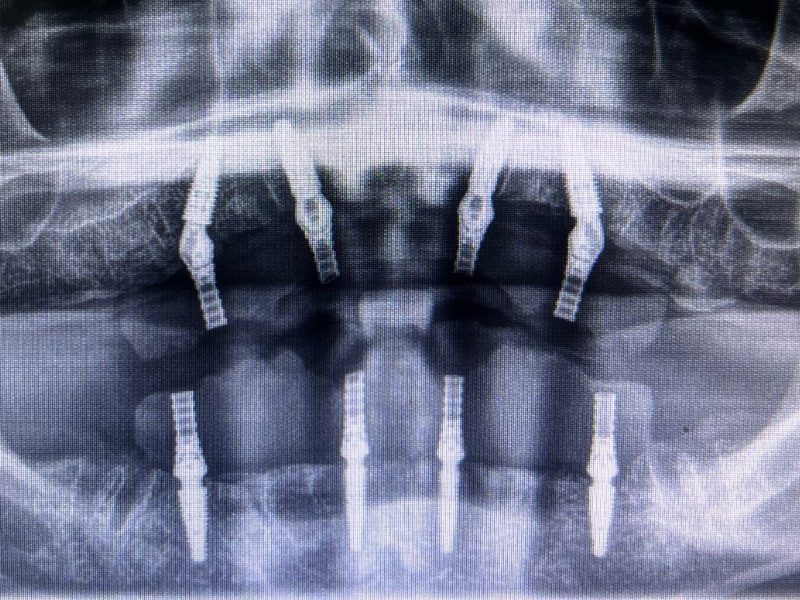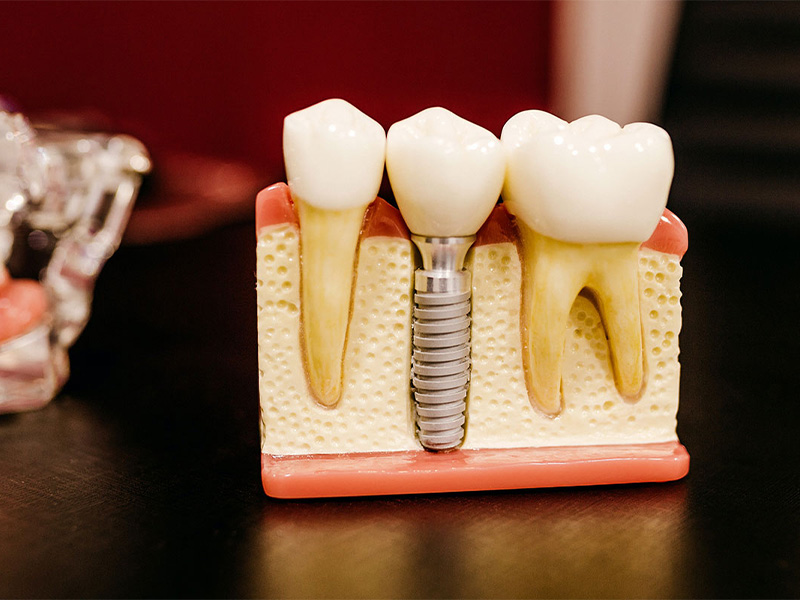
- December 20, 2024
- 28031 Views
Sedation Dentistry: How The Infusion of A Single Treatment Changed My Practice Forever

Dentistry is one of the few medical professions where the patient is routinely AWAKE for their surgery and treatment. Why do we accept this as the status-quo? How often do you hear from patients: “I’m terrified of the dentist”, or “I need to be knocked out for any work!”? At my office, this occurs daily, sometimes even hourly. Dental anxiety is real, debilitating and a lot more common than we probably think. A staggering 36% of patients have moderate dental fear and 12% have a reported extreme dental fear1. This fear prevents patients from seeking care, which in turn, leads to further deterioration of their dentition and health. Now, the patients that fear the dentist the most, end up being the ones that need the most dentistry – and usually the most invasive.
How do we as dental professionals help these patients that can’t even tolerate the smell of a dental office, let alone allow us to remove a tooth while being fully conscious?
Sedation Dentistry: The Solution To Dentistry’s Silent Problem
I took a leap of faith, and decided to invest the time and money to become certified in Intravenous Moderate Conscious (IV) and oral conscious sedation. At that time, I had no idea that this would be the single most impactful and life changing decision I have made in my dental career. Now, I have taken it upon myself to show others why this skill will become the single most useful “tool” in your dental workshop.
Transforming Lives: A Real World Case Study:
Patient T.B. is a 56 y/o male who had not seen a dentist in years due to “one bad experience where I felt everything”. His debilitating fear left him with an extremely worn and painful dentition due to chronic grinding, anxiety and an aversion to the dentist (Figure 1). So how did we help T.B? Through the use of IV and oral sedation. We were able to perform a plethora of dental treatment over several appointments, giving him back his smile and confidence. The best part? The experience was so overwhelmingly positive, he now returns without any sedation for his routine prophylaxis appointments.

Patient T.B.’s Treatment and Sedation Plan:
Appt 1: Sedation Type: IV Sedation
Treatment: Extraction #31 and root canal therapy #31
Appt 2: Sedation Type: Oral Sedation
Treatment: Gingivectomy #6-#11, Crown preparations teeth #4 -12 and #20 – 30, Impressions and temporization.
Appt 3: Sedation Type: Oral Sedation
Treatment: Delivery of multiple crowns and occlusal guard insert (Figures 2 and 3)
Appt 4: No sedation requested, prophylaxis and exam.


With Great Reward, Comes Great Responsibility
Before going down the path of sedation, it’s important to first feel comfortable and confident as a general dentist with all of the treatments you’re currently providing. Sedation, whether oral or IV, is another part of the treatment that you alone will be responsible for, this includes any and all complications. Some dentists may choose to just incorporate oral sedation, and others may choose both oral and IV, depending on their comfort level.
Both sedation options can be a very productive addition to your office and the reason is twofold: the production you get from the sedation billing itself and the production you get from the treatment being performed under sedation. On average, the equivalent of ~6 appointments can be completed during one 2-3 hour sedation appointment and that is where the incentive for both patient and provider stems. I’ve performed all types of cases for patients under sedation, ranging from full mouth extractions, to quad restorations, to implant placement, and I’ve even provided routine prophylaxis for the extremely fearful patient (remember that 12%?). You can tailor each sedation appointment to fit the needs of the patient.
For oral sedation, most practices bill between $200-$500 per appt. IV sedation is billed per 15 min unit and is approximately $175 per unit. For example, the average wisdom tooth removal case is 90 minutes and the office would bill for 6 IV units. IV is often covered by insurance for qualifying cases, whereas oral sedation tends to be a non-covered and out-of-pocket expense.
The Roadmap To Sedation Success
Though you will need to confirm all requirements and legalities with your respective state and licensing board, the process is quite simple:
Step 1: Training: It’s imperative that you receive all proper training and education from an accredited program before you start offering sedation of any kind. Things can go wrong very fast if you are not prepared, confident and trained. Most oral sedation courses are over a long weekend. IV sedation is a mini-semester through an approved course (i.e. DOCS) and requires real life cases along with an IV certificate/approval from your state. Both require ACLS, BLS and in-depth re-certifications every few years. You must be a confident and calm provider in order to offer either type of sedation. It is inevitable that some type of medical emergency will arise and you must be prepared and willing to deal with complications that go above the typical day to day of what we as dentists are accustomed to. YOU are in charge – there is no anesthesia team by your side to direct you in the event of a complication. You should be comfortable placing an IV, reading an EKG, ETCO2, and though rare, be ready to intubate.
Step 2: Equipment and armamentarium Once certified, you will need to obtain all the required equipment, medications and storage. One of the most important items is a locked safe where your controlled substance medications are kept. There is a plethora of items required such as a sedation monitor, oxygen tanks, IV tubing and reversal agents which will need to be purchased and maintained in the office.
Step 3: Start seeing patients: After a thorough consult, you and the patient will discuss which sedation option is best for them and their specific needs. Patients will arrange to have a driver/companion with them the day of the appointment and your office should be ready to handle the intake and discharge of patients receiving sedation.
Tailoring Sedation To Fit The Patient’s (And Provider’s) Wants And Needs.
Though both types of sedation achieve the same end goal, the administration of each is very different. Oral sedation utilizes a pill that is administered in the office 1-hour prior to the patient’s procedure. A benzodiazepine, such as Triazolam or Alprazolam, is given orally and the dosage is patient specific based on weight, age, history. The dosage is intended to bring the patient into a very relaxed state, where they can still respond to commands and cues yet are “dozing off”. Not only are they extremely relaxed, their pain threshold is also higher, they are blissfully unaware of what is going on in the operatory and most have temporary amnesia so they don’t remember the appointment at all. I’ve been able to complete, in a few hours, the equivalent of approximately 6 traditional appointments (i.e. multiple quad restorations, root canals, crown preparations, CEREC crown inserts, extractions, implants, SRP, etc).

IV sedation is a whole different beast. Utilizing medications such as Fentanyl, Midazolam and Ketamine, titrations of medication are given via IV access until the patient reaches that perfect state of relaxation/sedation. This level of sedation is called “moderate conscious” and is not to be confused with deep sedation or general anesthesia. It’s important patient’s understand the difference between moderate and deep/general anesthesia. With moderate conscious, patients are still breathing on their own, can still respond to basic commands (i.e “take a deep breath”), yet they are in a nap-like state and are extremely unaware of their surroundings. They have little to no memory of the procedure and when they wake up – they feel like it’s only been minutes when it’s been hours. This is a much more dissociated state than oral sedation. IV sedation however comes with much more preparation, training and chance of complications, but it is also safer due to the immediate IV access available for reversal agents. IV is best for oral surgery-type procedures (i.e. extractions, implants). Whereas, oral sedation is better suited for the less invasive cosmetic types of procedures, from my experience.

Retraining The Dental Brain
My favorite part of offering sedation is that most patients have such a positive experience, their need for sedation decreases over time since we’ve essentially “re-trained” their dental mind through their sedation experience. I have seen patients first hand essentially cured of their debilitating dental fear- all from a simple medication!
“I love the expression “heavy lies the crown” when it comes to sedation – it’s a fantastic addition, but one must be ready to take on the responsibility.” – Gretchen Galvin, DDS
About the Author:
Dr. Gretchen Galvin is a general dentist and practice owner from Buffalo, NY. Dr. Galvin performs all aspects of general dentistry and is passionate about providing her patients care of the highest quality and comfort. She has pursued additional training in dental implants, hybrid “all-on-4” dentures and IV conscious sedation, offering her patients several types of sedation for their dental treatment. Dr. Galvin has successfully treated thousands of patients who suffer from anxiety and fear of the dentist.
REFERENCES:
Beaton L., Freeman R., Humphris G. Why are people afraid of the dentist? Observations and explanations. Med Princ Pract. 2014;23:295–301. – PMC – PubMed
A Few Valuable Resources
Ask the Dentist
Dental Implants Cost: Price by Type, Procedure & How to Save
Dentaly.org
Dental Implants: Costs, Procedures and Types in the US
NewMouth
Dental Implants & How Much They Cost
American Academy Of Implant Dentistry
AAID Implant Types